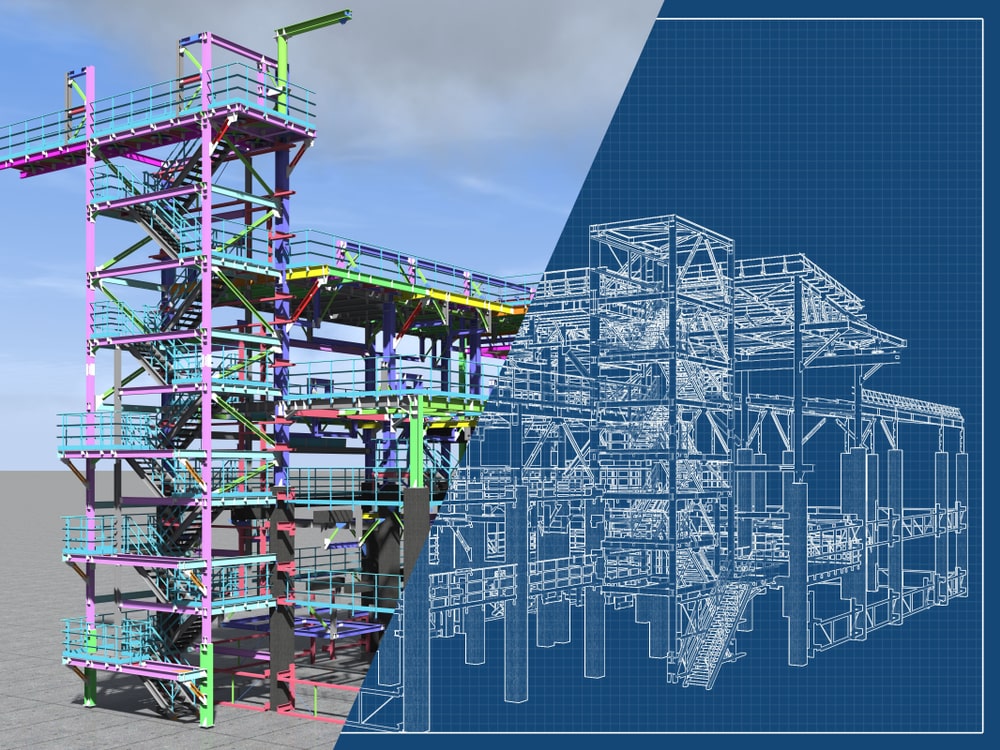Sector - Sustainability
Taking the Field with BIM

Tom Boland, Global Head of Digitalisation at Zutec, discusses the importance of having a site-based technology strategy and why construction companies should adopt Field BIM now.
By now, all those in the construction industry are well-acquainted with BIM. It has come a long way since its inception in the 1970s, especially in the UK, where standards in development over the course of 12 years became the basis of international standard ISO 19650, launched in 2019. In 2011, the government announced its Construction Strategy, which set out to reduce construction costs by 20% by 2015, subsequently putting the UK on the map as a global BIM leader.
However, as the industry becomes increasingly digitised and client demands evolve, a new form of BIM has come into play: BIM to field, or ‘Field BIM’. This is the process of managing construction data in an information model and using it to inform accurate construction, operations or maintenance on site. With Field BIM, handheld mobile devices become essential tools in accessing shared information and collaborating in real-time with colleagues back in the office.
The benefits are numerous, ranging from saving time and minimising the risk of error, to building trust, ensuring coordination and boosting visibility. With so many advanced digital tools available to us today, it would do the industry a great disservice not to utilise them to its full advantage. Here is a closer look into how Field BIM can transform construction projects, and the sector, as a whole:
Trust
Trust is the foundation of good business, whether between a company and its clients or among team members. In the world of construction, the success, and even safety, of a project depends on how much those involved can trust one another and the work that is being carried out from the design phase all the way through to a building’s handover.
Clients need to be able to believe that projects will be delivered on time and as promised, and teams need to trust each other in order to collaborate effectively. And, providing data-led evidence of progress in real time, on site, lets stakeholders know that they are investing in the right business. Trustworthy actions lead to a good reputation, which, of course, leads to better company morale and repeat business, proving that deployment of Field BIM benefits everyone.
Coordination
Field BIM is also a game changer in terms of coordination on projects. Quality inspections, compliance reporting and machinery delivery timings can all be coordinated by site managers using smartphones or tablets. A Field BIM platform or app will typically include access to 3D BIM models, a document library for all assets on the build, checklists for QA/QC, a site diary and digital forms. When it comes to snagging, there is functionality for live ‘issue creation’ and tracking of the necessary work to the point of sign off—all in the field. In some cases, this can even be done without an Internet connection. For example, quality and compliance related checklists can be created on site using an app such as Zutec Field.
Accurate data also ensures that project teams can head off potential problems early. This has the benefit of minimising errors, delays and costs. On all builds, the aspiration is to deliver results on time and on budget, and Field BIM is increasingly viewed as essential for project success and profitability.
Visibility
The use of Field BIM also results in greater transparency. The main professionals involved in a project, such as the architect, engineers and contractor, will be able to clearly assess fundamental aspects of a build, carry out inspections and hand over huge amounts of important asset information to the owner when the build is complete.
During the build, teams can view real-time data, update status information, and mark up the project’s 3D model in the field. 4D progress tracking is also possible, allowing a team to monitor a façade installation in line with scheduling data, for example. This way, stakeholders have a detailed overview of the entire process, and stay on top of everything that happens, or is about to happen, on site.
Field BIM tools also capture the inspection history of a project, including the date of inspection, the person who signed it off and the person who reviewed it. Workflows can be built into the toolset to boost visibility at every stage of the project.
This level of visibility has never been more vital in construction. Dame Judith Hackitt’s ‘Building a Safer Future’ report, produced in the wake of the Grenfell fire tragedy, called for a common process to achieve true transparency of information across buildings. With Field BIM in play, this golden thread becomes a reality, as data is securely recorded whether related to compliance sign-offs, materials used, or asset information for operational manuals. Key information about a building can be relayed through the relevant chain of stakeholders, from architects to fire engineers, and building safety managers to end-users.
Looking ahead
Although digital tools designed for the construction industry are becoming more widely available and their use is progressively becoming the norm, there are still those who are hesitant to embrace them. The key is understanding the advantages of using new technologies and to find a platform which is both user-friendly and which delivers outstanding results.
Further, contractors want standardisation in order to make their work simpler, so the streamlining of the various stages of a project, including the construction, inspections and handover phases, is not only useful but essential. Paper is also increasingly becoming obsolete, and in this global pandemic, there is a growing reliance on digital communication, and a need to carry out inspections and collaborate with colleagues from home. It’s therefore crucial that tools such as Zutec Field are used in order to ensure people stay connected, even when they have to be apart.
Lastly, Field BIM allows construction professionals to learn new skills. Keeping up to speed with the latest tools means staying ahead of the game, and being prepared for a world that could one day be totally virtual. In order for this to happen, however, it takes commitment from all sides, and to remember that everyone involved, from the client to the contractor, has one goal in mind: to deliver the best project possible.
If you would like to read more stories like this, then please click here
Related Articles
More Sustainability Features
- Solar on all new homes must align with 1.5 million homes target
20 Jun 25
The Government have said that solar panels will be included in the FHS, leading to installation on the vast majority of new build homes.
- The renewables revolution in the Scottish Highlands
25 Feb 25
The Highlands are at the heart of a transformative renewables revolution, poised to lead a generational shift in energy production.
- Government correct to head off Climate and Nature Bill
7 Feb 25
The ‘Climate and Nature Private Members’ Bill’, seeks to set new legally binding targets for climate and nature.






